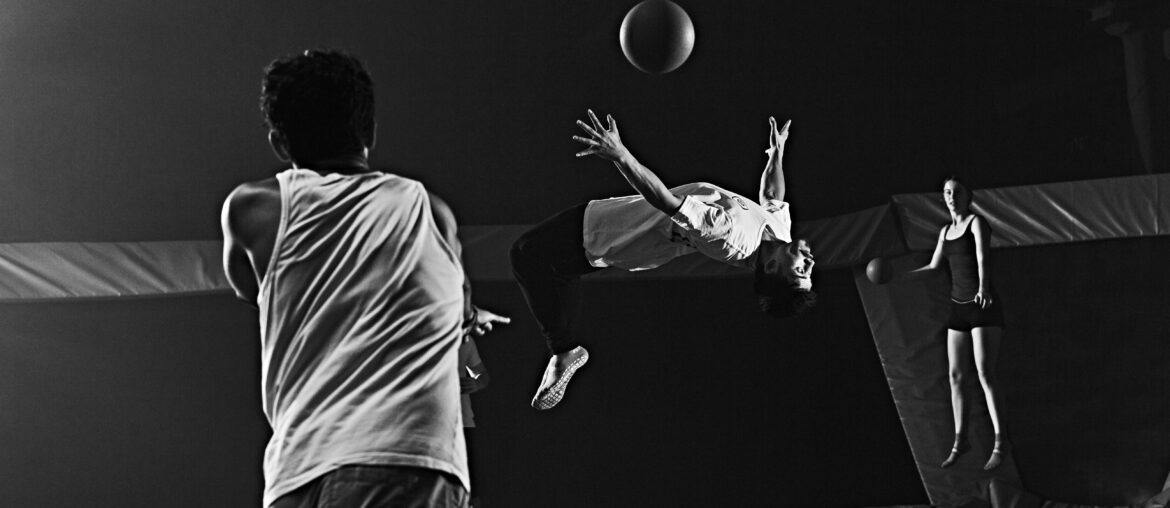The backyard trampoline has long been a symbol of childhood joy, a bouncy haven for gravity-defying leaps and boundless energy. However, the world of trampolines has evolved beyond simple recreational fun. Today, trampolines are increasingly recognized as valuable fitness tools, offering a low-impact yet highly effective way to boost cardiovascular health, improve balance, and build strength. As you delve into the realm of trampoline fitness, you’ll quickly encounter a fundamental question: round or rectangle – which shape reigns supreme?
While both round and rectangle trampolines offer a fantastic bouncing experience, they possess distinct characteristics that cater to different needs and fitness goals. Understanding these differences is crucial in making an informed decision that aligns with your specific requirements. Let’s delve into the nuances of each shape to determine which bounce best suits your fitness journey.
For further reading on Home Improvement, visit Forever Friendly.
The Classic Circle: Safety and Gentle Bounce
The round trampoline is the quintessential image that springs to mind when we think of trampolines. Its circular design is inherently linked to safety. The springs in a round trampoline are strategically positioned to pull towards the center. This means that regardless of where you land on the jumping surface, the springs work together to direct you back to the middle. This centralized bounce minimizes the risk of the user being propelled towards the edges, making round trampolines a popular choice for families with young children and individuals prioritizing safety during their workouts.
Beyond safety, the round design typically offers a gentler and more predictable bounce. As all the springs engage simultaneously, the bounce tends to be uniform and less intense compared to a rectangular trampoline. This can be advantageous for beginners or those seeking a low-impact cardio workout. The softer bounce is kinder to the joints, making it an excellent option for individuals recovering from injuries or those with joint sensitivities.
Round trampolines are also generally more affordable than their rectangular counterparts. Their simpler construction and widespread availability contribute to a lower price point, making them an accessible entry point into trampoline fitness. Furthermore, their compact circular shape often makes them easier to fit into smaller backyards or workout spaces.
However, the very characteristic that makes round trampolines safer – the centralized bounce – can be a limitation for more advanced fitness enthusiasts. The uniform spring engagement means that the bounce height and power are somewhat restricted. It’s challenging to achieve the same level of vertical lift and control on a round trampoline compared to a rectangular one. This can limit the execution of more complex acrobatic maneuvers or high-intensity interval training (HIIT) exercises that require significant airtime.
The Powerful Rectangle: Performance and Precision
Rectangular trampolines, on the other hand, are the preferred choice for gymnasts, athletes, and serious fitness enthusiasts. Their elongated shape and independent spring system offer a significantly different bouncing experience. In a rectangular trampoline, the springs operate independently along each side. This allows for a more powerful and controlled bounce. When you land on a rectangular trampoline, only the springs in that specific area engage, resulting in a higher and more responsive rebound.
This independent spring action provides a larger “sweet spot” for jumping and landing. Unlike the round trampoline that naturally guides you to the center, a rectangular trampoline allows for more varied movements and precise landings across the entire jumping surface. This is crucial for executing complex gymnastic routines, practicing specific athletic drills, or performing high-intensity fitness exercises that require agility and control.
The powerful bounce of a rectangular trampoline translates to a more intense workout. The increased vertical lift allows for deeper muscle engagement and a greater cardiovascular challenge. Exercises like tuck jumps, pike jumps, and even plyometric variations become more dynamic and effective on a rectangular trampoline.
However, the enhanced performance of rectangular trampolines comes with a few considerations. Firstly, they are generally more expensive than round trampolines due to their more complex construction and higher-grade materials. Secondly, their powerful bounce requires more control and coordination, making them potentially less suitable for very young children or complete beginners without proper supervision. The independent spring action also means that landing near the edges doesn’t offer the same level of automatic redirection as a round trampoline, potentially increasing the risk of falling off if caution isn’t exercised. Finally, their larger, rectangular footprint can be more challenging to accommodate in smaller spaces.
The Verdict: Matching Shape to Your Goals
Ultimately, the “better” trampoline depends entirely on your individual needs and fitness aspirations.
- Choose a Round Trampoline If:
- Safety is your top priority, especially for families with young children.
- You are looking for a gentle, low-impact cardio workout.
- You are a beginner to trampoline fitness.
- Budget and space are significant constraints.
- Choose a Rectangle Trampoline If:
- You are a gymnast, athlete, or serious fitness enthusiast seeking high-performance bouncing.
- You desire a more powerful and controlled bounce for advanced maneuvers and high-intensity training.
- You need a larger “sweet spot” for varied movements and precise landings.
- You are willing to invest more for enhanced performance and have sufficient space.
In conclusion, both round and rectangular trampolines offer unique advantages for fitness. The round trampoline provides a safe and gentle introduction to bouncing, ideal for families and low-impact workouts. The rectangular trampoline, with its powerful and controlled bounce, caters to those seeking high-performance training and advanced maneuvers. By carefully considering your fitness goals, safety concerns, budget, and available space, you can choose the trampoline shape that will best support your journey to a bouncier, healthier you.





